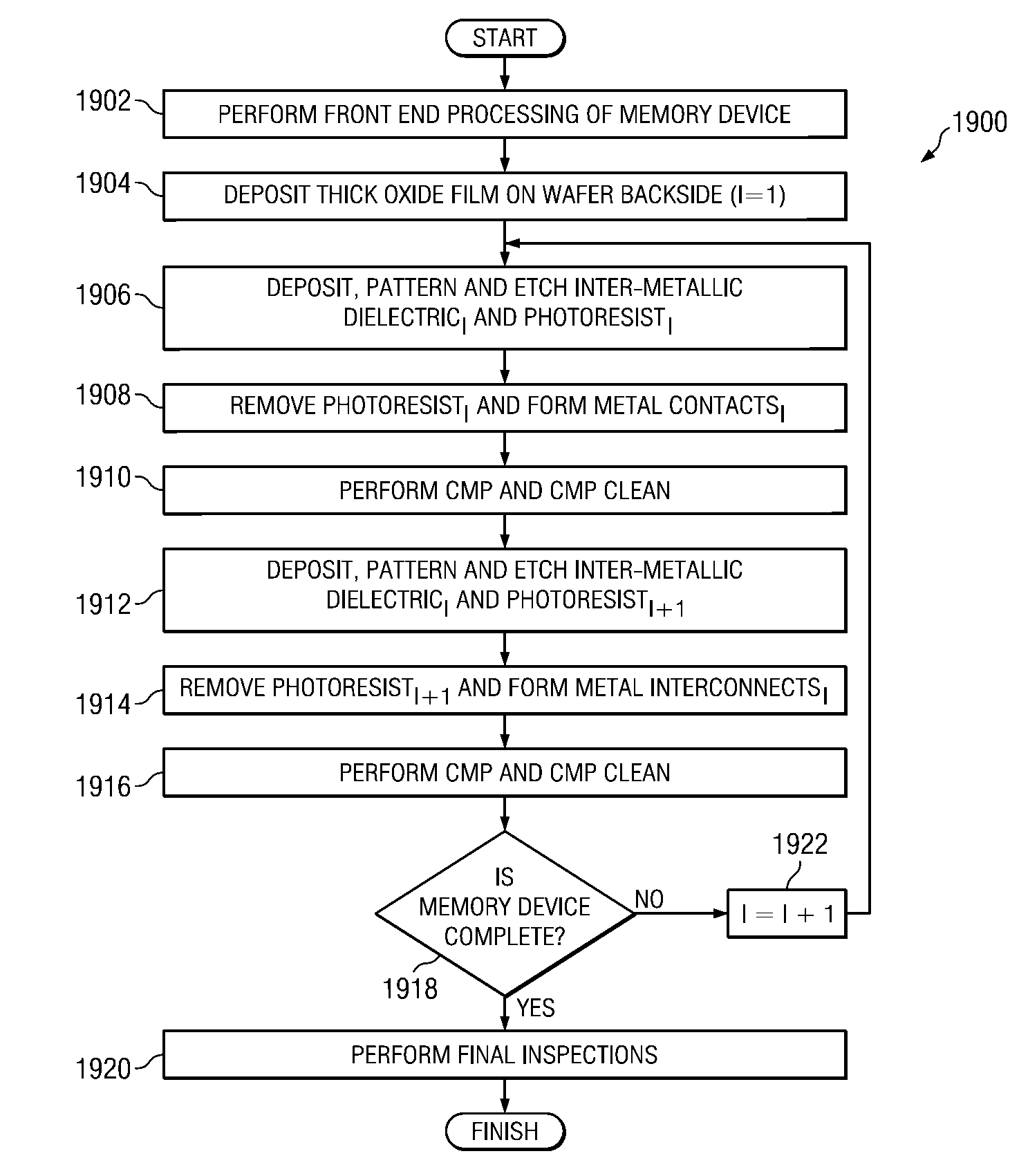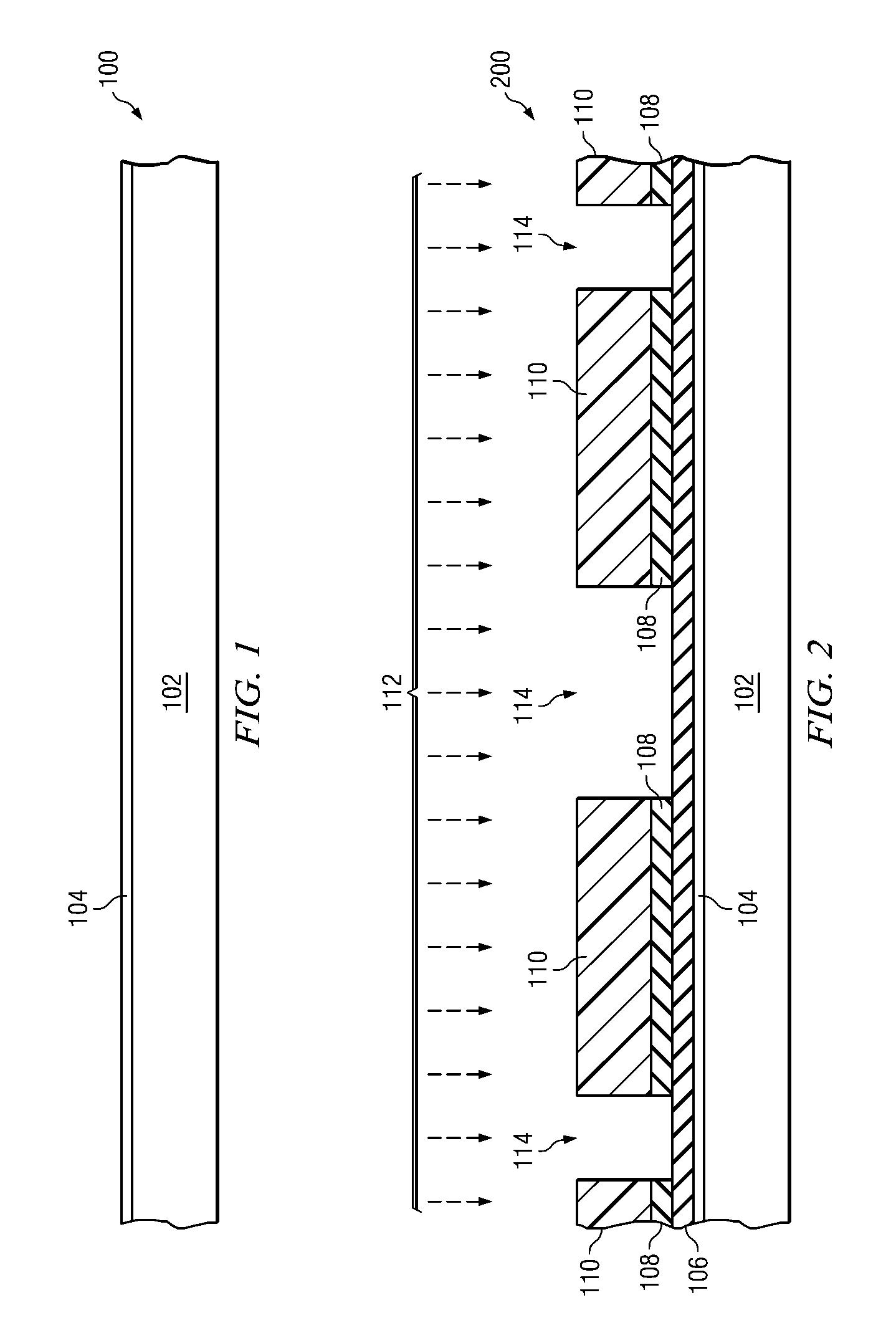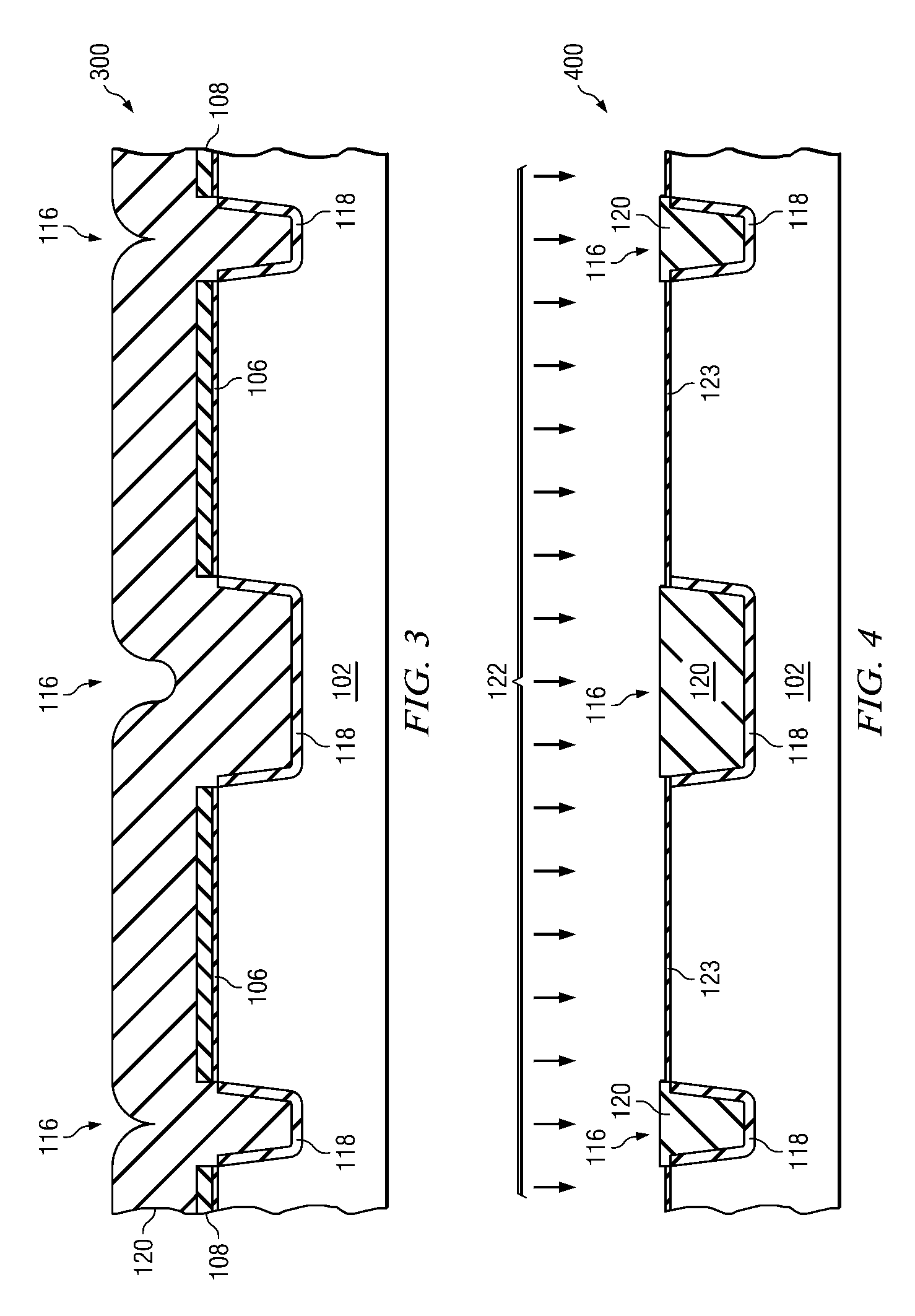Thick oxide film for wafer backside prior to metalization loop
a metalization loop and thin oxide film technology, applied in the field of substrate processing, can solve the problems of increased rework, zero yield in portions, integrated circuits, etc., and achieve the effect of optimizing the removal of backside contamination
- Summary
- Abstract
- Description
- Claims
- Application Information
AI Technical Summary
Benefits of technology
Problems solved by technology
Method used
Image
Examples
Embodiment Construction
[0020]The present invention will now be described with reference to the drawings wherein like reference numerals are used to refer to like elements throughout. The present invention provides a method for depositing a thick oxide film on the backside of wafers to reduce large wafer backside contamination. However, it will be appreciated that the invention may be advantageously employed in applications other than those illustrated and described herein.
[0021]Referring to the drawings, FIGS. 1-10 are described in accordance with one embodiment of the invention that relates to front end of line processing (FEOL). FIGS. 11-18 pertain to back end of line processing (BEOL) and involves depositing a thick oxide film on a wafer backside prior to the wafer metallization loop or BEOL. The process allows semiconductor devices to be manufactured with higher yields, less processing steps, and the like. It is appreciated however that the thick oxide film could be deposited in more than one layer or...
PUM
 Login to View More
Login to View More Abstract
Description
Claims
Application Information
 Login to View More
Login to View More - R&D
- Intellectual Property
- Life Sciences
- Materials
- Tech Scout
- Unparalleled Data Quality
- Higher Quality Content
- 60% Fewer Hallucinations
Browse by: Latest US Patents, China's latest patents, Technical Efficacy Thesaurus, Application Domain, Technology Topic, Popular Technical Reports.
© 2025 PatSnap. All rights reserved.Legal|Privacy policy|Modern Slavery Act Transparency Statement|Sitemap|About US| Contact US: help@patsnap.com



